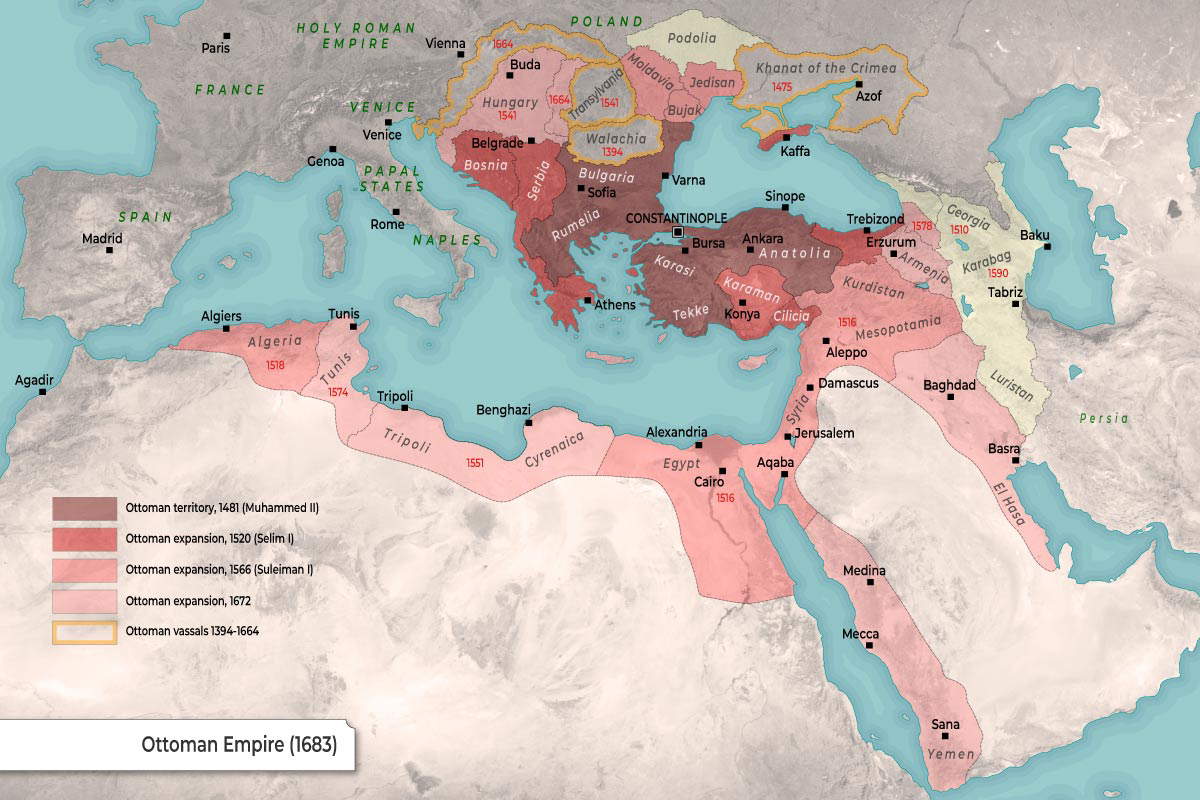So yesterday I got super curious about Ottoman Empire maps specifically from their peak in 1683. Wanted a visual to wrap my head around how massive this thing really was. Here’s exactly how I hunted it down.
The Starting Point: Knowing What I Needed
First off, I knew I needed that peak year – 1683. Wasn’t after some blurry old scan or a modern redraw. Wanted something real detailed, showing borders like they were right before things started crumbling after Vienna. Just googling “ottoman empire map” spat out mostly modern political stuff or overly simplified historical sketches. Useless.
I remember thinking, “Forget basic searches.” Needed proper geospatial data I could actually work with. Started punching terms like “ottoman empire GIS data” or “historical vector maps 1683” into the search box. Mostly dead ends. Stumbled across academic papers mentioning archives or paid sources, but I wanted free and accessible, like right now.
Finding the Data Goldmine
Anyway, I kept digging. Then it clicked – maybe platforms dealing with OpenStreetMap (OSM)-style data could be the answer. Knew OSM itself is modern, but figured communities might share historical layers. Tried my luck searching for “historical OSM datasets” or “ancient boundaries geodata”. Bingo.

Turns out there’s this whole community thing where people contribute historical map layers. Found a few forums mentioning specific repositories built using OSM tools but hosting historical stuff. Got excited. Dug through them, looking for anything tagged “Ottoman” or “17th century”. Hit a wall again – lots of Europe, not the empire. Almost gave up.
Then, scrolling through some dusty forum thread, saw a comment about a specific world historical boundaries project built off OSM tech. Jumped on that. Their website was… clunky. Searched “ottoman” again within their dataset section. Finally! Spotted a dataset labelled “Ottoman Empire Administrative Boundaries circa 1683”. Clicked download so fast.
Handling the Raw Geodata
Okay, had the raw data zipped up. But it wasn’t a simple picture file. Came as a big ol’ folder full of shapefiles (.shp, .dbf, .shx, etc.) – classic GIS vector stuff. No point-and-click map viewer here. Needed to open it properly.
Fired up QGIS (free mapping software, lifesaver). Went File -> Open. Navigated to the folder. Selected the main .shp file. Boom! Took a sec to load, then suddenly there it was – the familiar boot shape of Turkey, but stretched crazily up into Austria and Hungary, deep into the Balkans, swallowing North Africa, and pushing way down into the Arabian Peninsula. Way bigger than I pictured.
Thing looked chaotic initially. No labels, just a jumble of lines. Had to style it:
- Right-clicked the layer -> Properties -> Symbology.
- Changed the fill to a light sandy brown (felt Ottoman-ish).
- Made the outline thicker, in dark red.
- Fiddled with transparency so I could see modern borders underneath later.
Much better. Could finally see the internal administrative divisions too – eyalets all over the place.
Making Sense of the Giant
To grasp the scale, I added a modern world countries layer underneath. Seeing those thin modern borders underneath this monster empire spanning three continents was nuts. Visualized Vienna right on its ragged edge in the northwest. Zoomed in on that area. Imagined those Ottoman tents outside the city walls.
Compared it mentally to the Roman Empire map – felt way less “Mediterranean lake”, more sprawling landmass connected by huge borders. Kept zooming out. Jaw dropped seeing how it squeezed Russia from the south and blocked Western Europe’s overland routes east. Explained so much about history – why everyone kept fighting them. It was literally the roadblock to everywhere.
Clicked the “Measure” tool in QGIS. Traced roughly from the Algerian coast to Baghdad, then up to Hungary. That distance? Brutal. No wonder holding it together was a logistical nightmare. Got why they called it the “Sick Man” later – this thing was designed to fracture.
Wrapping It Up
Whole process took a few hours, honestly. Search rabbit holes, dead ends, finally hitting paydirt with that historical vector dataset, wrestling the GIS software open, and styling it up. Worth every second.
Final map really drove home the sheer size and vulnerability of the empire at its absolute peak. That thin red outline covering all that brown? Looked strong, sure, but seeing how much internal territory it had to hold, how far it stretched, you immediately understand why 1683 wasn’t just a battle loss, it was the start of the long, inevitable slide. No empire that big, with borders that complex, could hold forever once the momentum stopped. Staring at the map in QGIS made that history lesson painfully obvious.








